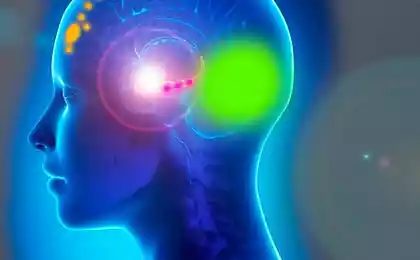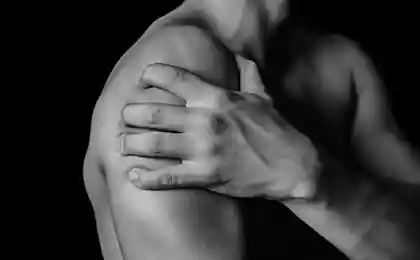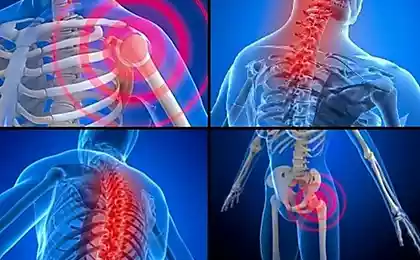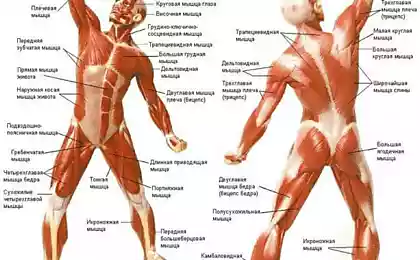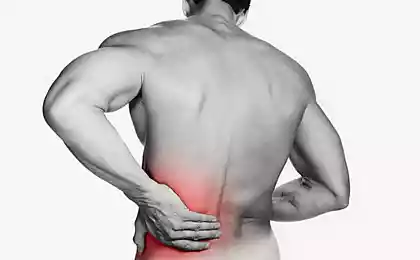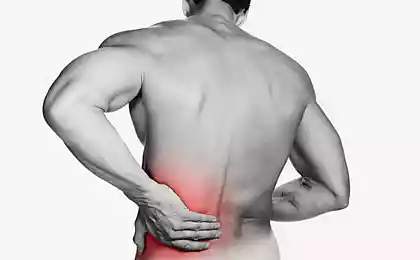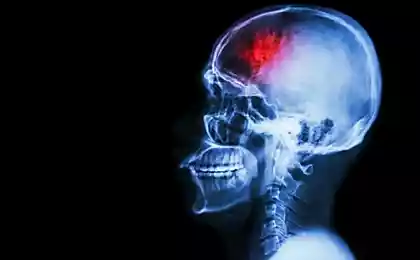611
Transient ischemic attack: a harbinger of trouble
Transient ischemic attack (TIA) is a transient violation of cerebral circulation. Occurs as a result of the abrupt cessation of blood supply to a certain area of brain tissue, and then recover in a short time. In this case, all clinical symptoms go away completely within 24 hours without leaving any defect, but in most cases it is 20-30 minutes. This is the main difference between TIA from stroke, because the symptoms in these two States are the same. Early transient ischemic attack called "mini-strokes".
Transient ischemic attack — a terrible harbinger of stroke. So the body tries to "warn people" that it is time to think about their health and change the lifestyle. The main reasons TIA — cholesterol plaques in the blood vessels, high blood pressure, heart disease and blood problems, diabetes, excess weight, bad habits. After the occurrence of ischemic attack there is a big probability that in the nearest time there will be a stroke, so this condition should be taken very seriously.

The symptoms of transient ischemic attack
The TIA clinic is diverse and depends entirely on the size and location of the area of the brain that suffers from lack of oxygen. Theoretically, the types of transient ischemic attack may be a lot, but in medicine there are two main options:
1. TIA in the carotid system (right or left). In this case, all the symptoms will occur on the side opposite the location of the pathological focus:
2. TIAS in the vertebral-basilar pool:
These symptoms are transient ischemic attacks need not be present in every case, often transient attack is accompanied by only one or more signs. As a rule, TIA starts suddenly, usually on the background of high blood pressure, physical activity, psycho-emotional stress. Sometimes the symptoms disappear so quickly that people don't even have time to figure out that it was, in more severe cases, symptoms regressed gradually. But there is an important point: at the end of the day should not be absolutely no manifestations. Otherwise this state will be interpreted as a stroke.
Treatment of transient ischemic attack, TIA, even if the symptoms disappeared completely, is it mandatory to admit the patient to the hospital. First and foremost, to conduct a full clinical examination and determine the cause of the disease.
Treatment should be started immediately and include:
Nootropics and neuroprotective agents intravenously (ceraxon, encephabol, Actovegin) to maintain and enhance the metabolic processes in brain tissue in conditions of lack of oxygen. Antiplatelet agents, with the aim of blood thinners (cardiomagnyl, procard). Drugs to reduce blood pressure (lisinopril, Hartel). Hypolipidemic (cholesterol lowering) (trovan, lovastatin). Symptomatic therapy depending on the manifestation (sedative, anticonvulsant, hypoglycemic, hypnotics). Typically, treatment lasts at least 10 days, the patient is under the scrutiny of the local doctor. Is therapy aimed at eliminating the causes of transient ischemic attack and prevent stroke.
Obligatory control:
Also, the mandatory rejection of bad habits, diet and healthy lifestyle (walking, mode of work and rest)
Possible consequences of TIA
By itself, transient ischemic attack is not an immediate danger to life, but is a harbinger of terrible trouble. If you leave the condition without proper attention, soon it can happen. As a rule, be more than 2-3 TIA, then inevitably develops a severe stroke, which can make a person disabled or cause death. 10% of people within 1-2 days after transient ischemic attack develops cerebral stroke or myocardial infarction. Unfortunately, the vast majority of patients who have had a TIA (especially if it was within 5-10 minutes), do not seek medical help, which significantly worsens the prognosis and leads to disastrous consequences. published
P. S. And remember, just changing your mind — together we change the world! © Join us at Facebook , Vkontakte, Odnoklassniki
Source: kozdor.ru/odna_stat.php?id=779
Transient ischemic attack — a terrible harbinger of stroke. So the body tries to "warn people" that it is time to think about their health and change the lifestyle. The main reasons TIA — cholesterol plaques in the blood vessels, high blood pressure, heart disease and blood problems, diabetes, excess weight, bad habits. After the occurrence of ischemic attack there is a big probability that in the nearest time there will be a stroke, so this condition should be taken very seriously.

The symptoms of transient ischemic attack
The TIA clinic is diverse and depends entirely on the size and location of the area of the brain that suffers from lack of oxygen. Theoretically, the types of transient ischemic attack may be a lot, but in medicine there are two main options:
1. TIA in the carotid system (right or left). In this case, all the symptoms will occur on the side opposite the location of the pathological focus:
- violation of movements of the same name in the arm and leg (paresis);
- change sensitivity strictly on one half of the body;
- facial asymmetry due to paresis of facial muscles (flattening nasolabial fold, drooping of corner of mouth);
- speech disorder (difficulty in pronunciation of words up to a full aphasia) with TIA in left carotid system right-handers, right — handers;
- decreased vision, the sense of "shroud", the "shadow" in front of the eyes (one eye on the affected side).
2. TIAS in the vertebral-basilar pool:
- violation of coordination of movements;
- instability when walking;
- dizziness;
- nausea, aggravated by change of body position and almost disappearing alone, and sometimes vomiting;
- change of gait (because of the instability of man forced to walk with legs wide apart);
- numbness in side of face;
- double vision;
- reduction of vision in both eyes;
- change field of view (drop sight on the right or left half of one eye — hemianopsia);
- hearing loss.
These symptoms are transient ischemic attacks need not be present in every case, often transient attack is accompanied by only one or more signs. As a rule, TIA starts suddenly, usually on the background of high blood pressure, physical activity, psycho-emotional stress. Sometimes the symptoms disappear so quickly that people don't even have time to figure out that it was, in more severe cases, symptoms regressed gradually. But there is an important point: at the end of the day should not be absolutely no manifestations. Otherwise this state will be interpreted as a stroke.
Treatment of transient ischemic attack, TIA, even if the symptoms disappeared completely, is it mandatory to admit the patient to the hospital. First and foremost, to conduct a full clinical examination and determine the cause of the disease.
Treatment should be started immediately and include:
Nootropics and neuroprotective agents intravenously (ceraxon, encephabol, Actovegin) to maintain and enhance the metabolic processes in brain tissue in conditions of lack of oxygen. Antiplatelet agents, with the aim of blood thinners (cardiomagnyl, procard). Drugs to reduce blood pressure (lisinopril, Hartel). Hypolipidemic (cholesterol lowering) (trovan, lovastatin). Symptomatic therapy depending on the manifestation (sedative, anticonvulsant, hypoglycemic, hypnotics). Typically, treatment lasts at least 10 days, the patient is under the scrutiny of the local doctor. Is therapy aimed at eliminating the causes of transient ischemic attack and prevent stroke.
Obligatory control:
- blood pressure;
- sugar;
- cholesterol;
- coagulation system;
- the presence of atherosclerotic deposits in the blood vessels of the neck and brain (vascular ultrasound);
- status of brain tissue (CT).
Also, the mandatory rejection of bad habits, diet and healthy lifestyle (walking, mode of work and rest)
Possible consequences of TIA
By itself, transient ischemic attack is not an immediate danger to life, but is a harbinger of terrible trouble. If you leave the condition without proper attention, soon it can happen. As a rule, be more than 2-3 TIA, then inevitably develops a severe stroke, which can make a person disabled or cause death. 10% of people within 1-2 days after transient ischemic attack develops cerebral stroke or myocardial infarction. Unfortunately, the vast majority of patients who have had a TIA (especially if it was within 5-10 minutes), do not seek medical help, which significantly worsens the prognosis and leads to disastrous consequences. published
P. S. And remember, just changing your mind — together we change the world! © Join us at Facebook , Vkontakte, Odnoklassniki
Source: kozdor.ru/odna_stat.php?id=779
The bread of the Baltic: a great option daily grey of sourdough!
Electric SUV for a penny? The Japanese promise a revolution in the car market


